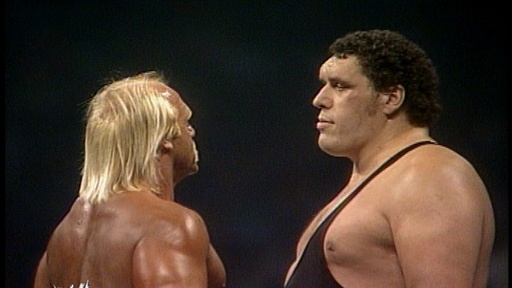“What was amazing to me was how similar the performers in both of these worlds are. They both make incredible use of their bodies to express themselves. They’re both performers.”
(Darren Aranofsky, writer/director)
Ballet is one of the most highly-respected art
forms in the world. Dancers literally suffer for their art. Kids as young as
four or five push beyond their threshold of pain to achieve that perfect step
or perfect position. In return, they gain the admiration of the art world,
selling out international theatres and achieving critical and creative acclaim.
Only those within the industry can properly understand and appreciate why
ballet is worth sacrificing your body and your mind.
That’s the world Darren Aranofsky referred to
during interviews for his Oscar-winning movie Black Swan. The world he compared
it to? Professional wrestling.
Now I fucking hate ballet, can’t stand it, but
I fully respect it. Wrestling? Just say the word and people roll their eyes. If
ballet is high-end, then wrestling is low-end; the lowest form of art and
entertainment, if it’s even allowed to be called those things. It is to
performance art what pornography is to cinema. Yet, even now, millions and
millions of people around the world love and revere it, children and adults. This
weekend, for example, the entire city of Miami, Florida is dedicated to
promoting it. A whole city! How can something so universally popular still create
so much derision?
Chances are that your exposure to wrestling, if
any, will be to WWE/F, the biggest wrestling company in the world. And I’ll be
honest, it’s not always great nowadays. At times, it can be downright awful.
But just like you wouldn’t use Chris Brown to talk about the entire history of
hip hop, you can’t use one company to discuss the entire wrestling industry.
Professional wrestling in its current form has been around for over a century,
and its origins go as far back as the gladiators of Ancient Rome. What you see
today has been influenced by things like Jacobean theatre, circus carnivals,
traditional pantomime, gymnastics and, yes, even ballet. Instead of being a
niche art form, it’s an amalgamation of many other ‘respectable’ arts. Quite the
accomplishment. Wrestling performers have spent decades perfecting the art of
the spectacle, evolving with the times.
And yes, it’s a spectacle. It’s not real. Of course
it’s not fucking real, we’re not stupid. Hamlet doesn’t really stab Polonius in
the chest, y’know. Sam Worthington doesn’t really travel to a faraway place
called Pandora. Hulk Hogan doesn’t actually get dropped on his head. Not real. But
what is very, very real is the physicality. Like those dancers who live and
breathe ballet every second of the day, so too do professional wrestlers.
Obviously, there are the wrestling matches themselves. A wrestling match is like a choreographed dance routine, except you’re falling and landing constantly on a concrete surface and everything is improvised. Very little is usually planned beforehand, it’s all done on the fly. When you know one missed step or wrong turn can cause horrific injuries, the decision to improvise like that has to be appreciated. And there have been horrific injuries; I’ve seen legs and necks broken, I’ve seen concussions, I’ve seen worse. Yet these brave performers continue to risk that, all the while continuing to entertain the crowd and staying in character. We all applaud those amazing actors who are able to remember and recite long Shakespearean soliloquys with the same intensity every night. Why should this be treated any differently?
But the physical toll on these guys doesn’t end
there. Travelling is an integral part of the wrestling industry, borne out of
the carnival lifestyle of the past. Yes, at the highest level, wrestlers can
afford planes and tour buses and whatever else, but 90% of wrestlers don’t
reach the highest level. In America alone, most wrestling performers have to
drive everywhere, trips that can last days sometimes. Just as recent as thirty
years ago, wrestlers would be on the road 300 out of 365 days in a year, away
from their families and loved ones, moving from hotel room to hotel room, city
to city, never getting proper rest. And all that just to perform in front of no
more than a few hundred people, usually. All for the love of the industry. Some
would say that the rock and roll lifestyle is what killed music greats like
Elvis Presley, Kurt Cobain and Amy Winehouse. They are tragic deaths. Wrestlers
have an almost identical lifestyle, but dying is seen as an eventuality, not a
tragedy. Why?
Now the common and overused criticism – wrestlers all take drugs and steroids and that’s how they do what they do, and look how they look. Hey, a lot of them did. Some of them still do. I’m not saying I like it, but it’s an aspect of the industry that is fucking fascinating. You can’t talk about rock and roll without mentioning the drug culture. It’s probably worse in the music industry, but it’s still fun to research and talk about. If drug culture is the reason professional wrestling should be alienated and looked down upon, then so should the music industry. So should boxing and American football and athletics. I could name more.
I’ve probably started rambling now. But if you’ve
managed to read this far, I hope you’ve got even a tiny bit more respect for an
art form that is severely misunderstood. Wrestling has the spectacle of a music
concert. It requires the same skill and ability as gymnastic. It is as
physically demanding as ballet. It needs the same concentration as theatre. And
it needs the same sacrifices to be made as every other art does.
And rightfully, it deserves the same respect.




No comments:
Post a Comment